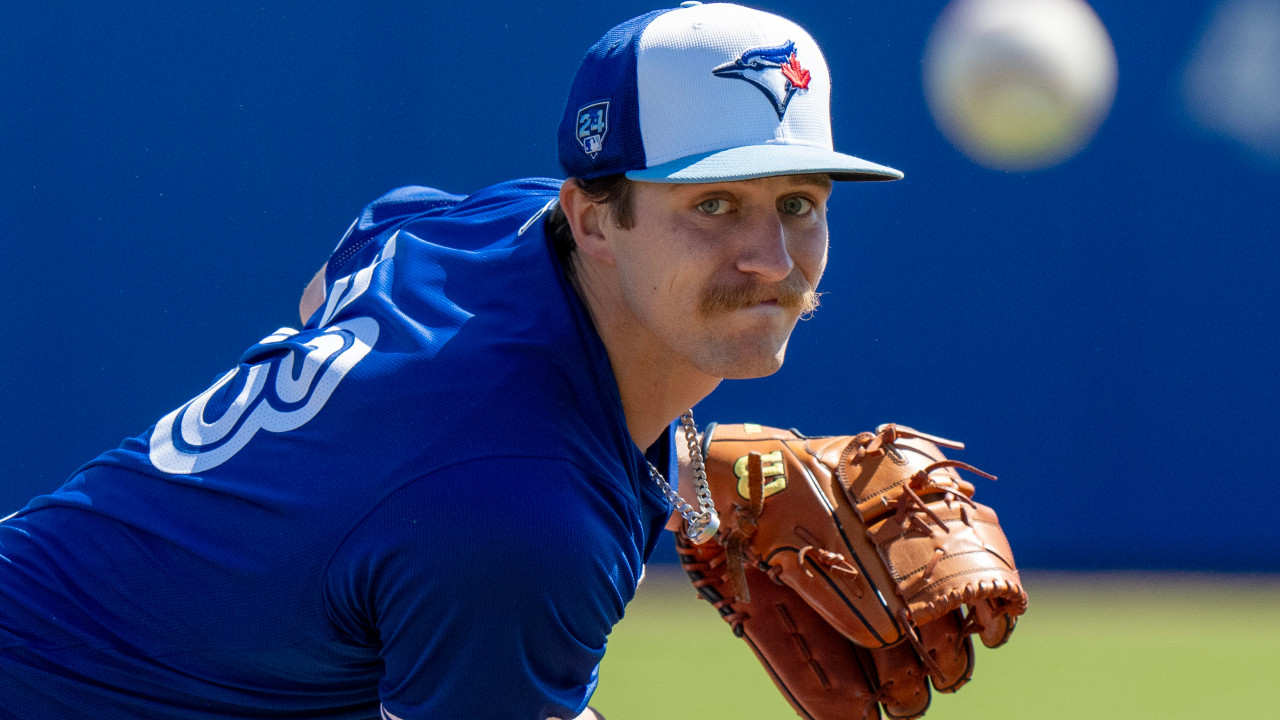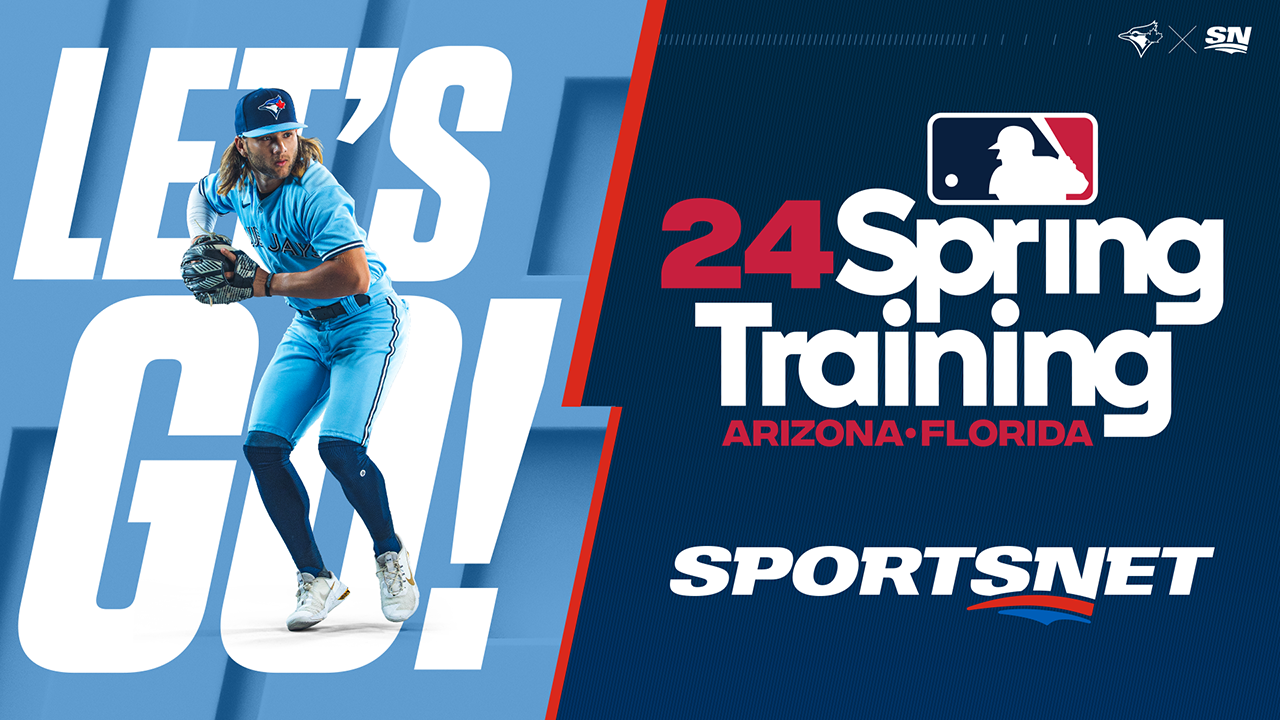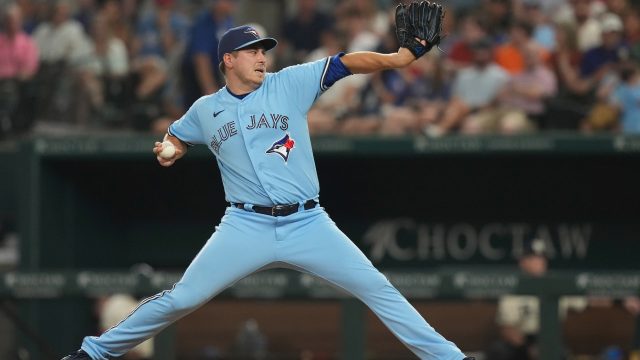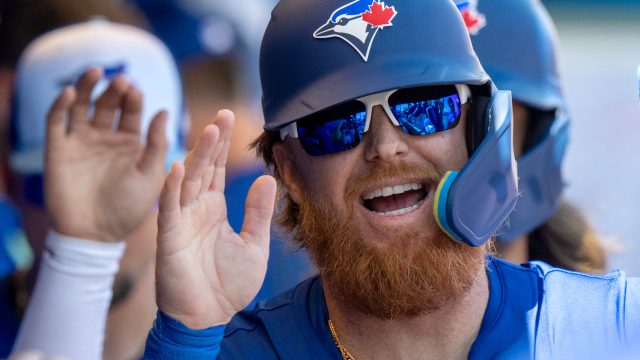
DUNEDIN, Fla. — Chad Dallas will admit it. As one bad outing begot another during his first professional season in 2022, the right-hander fell apart. Mentally, he struggled to process repeated failures and began dreading his start days. Physically, he let himself go and mindlessly gained weight, reaching 230 pounds by the end of the season.
“And it was not good weight,” the Blue Jays’ 2021 fourth-round pick says. “Definitely not good for a guy that’s 5-11.”
Finishing the year with a 4.60 ERA over 88 innings, stuck in A-ball long after all his buddies had been called up to double-A, Dallas knew something had to change. So, he conferred with a Blue Jays nutritionist and strength and conditioning coach to chart an off-season plan to eat more mindfully, gain strength and lean-out his body composition. He decided to stop giving hitters so much credit, quit worrying about players getting promoted around him and refocus himself on separating process from results. He vowed that this early-career wakeup call would be his last.
Reporting for spring training five months later having shed close to 20 pounds, Dallas was going right after hitters, displaying renewed confidence on the mound and trusting his stuff in the zone. He began the season back at high-A, but finally earned his double-A promotion only five starts later. He tossed consecutive scoreless outings in his first two starts at the level, rebounded quickly from a mid-season rough patch, and finished 2023 leading the Blue Jays minor-league system with 123.1 innings pitched.
Essentially, he learned the same lessons that established Blue Jays innings-haulers Kevin Gausman, Chris Bassitt and Jose Berrios did at his age. That if you want to regularly make 30-plus starts and throw 150-plus innings in the big leagues, you have to establish deliberate physical and mental habits. Training, recovery, mindset, nutrition — it all plays a part. And Berrios — who made his Grapefruit League debut with two scoreless innings Thursday against the Phillies — may be the best example in the sport.
“He’s just so diligent with his routines,” says Blue Jays manager John Schneider. “He understands his body, understands whether he needs to do a little bit more or less in between starts. He’s super-athletic, he takes great care of himself. When you look at all those things, that’s why players like that get big contracts. You trust that they’re going to put the work in to keep themselves ready.”
Over the last six seasons, only two MLB pitchers — Gerrit Cole and Aaron Nola — have made more starts, thrown more innings or faced more batters than Berrios. He hasn’t missed a start since the Minnesota Twins called him up from triple-A to join their rotation in May 2017. And aside from a bizarre, outlier 2022 when he was tipping pitches and battling command issues, all those starts and innings have reliably produced results around 20 per cent better than league average.
That doesn’t happen accidentally. And the meticulous preparation, work and recovery that underlies those results is why the Blue Jays felt comfortable making a seven-year, $131-million bet on Berrios late in 2021, handing out the kind of long-term contract for a starting pitcher who executives cut from the same disciplined, calculated cloth as Toronto’s front office typically try to talk their owners out of signing.
They did it because pitchers such as Berrios take your team where it’s trying to go — MLB’s post-season. Toronto’s next seven months are all about returning to that stage and, oh, maybe this time winning a game or two. But what stands between the club and its goal is the minor matter of needing effective pitching over 1,400 to 1,500 regular season innings.
Just sit with the enormity of that number for a second. Even with three 200-inning starters on your staff — understanding there were just five across MLB last season — you’d get around only 40 per cent of the way there. It takes a battalion to cover that much volume, which is why adequate organizational pitching depth is both a near necessity for a successful regular season team and a near impossibility to build out.
So many pitchers get hurt; so many others prove defective. An outcome like the one the Blue Jays enjoyed last season, in which they used only eight starters — effectively six, if you remove Trevor Richards, who opened three times, and Wes Parsons, who started once — while concentrating 742.1 innings within their top four is only more unlikely to repeat than it is to achieve.
Which is why Bowden Francis is getting stretched out, as the Blue Jays explore how his undeniable shorter-stint stuff holds up into a fourth and fifth inning. Why Mitch White was re-added to the club’s 40-man roster over the winter and continues to receive chances despite the 7.60 ERA he’s pitched to across 55.2 innings wearing a Blue Jays uniform.
It’s why Dallas is getting a look in big-league camp as the Blue Jays test whether his spin-to-win approach can continue to get results against more advanced hitters. It’s why CJ Van Eyk could move quickly up the system this year if he can continue refining his vast repertoire and build on a strong Arizona Fall League performance. It’s why everything about Ricky Tidemann’s return from this spring’s hamstring injury and innings build-up into summer will be managed with one eye on how he could make a major-league impact over the back-half of the season.
It’s why Adam Macko and Devereaux Harrison are getting looks in big-league camp. It’s why Paxton Schultz and Luis Quinones will pop over from the minor-league side. The Blue Jays feel strongly about their internal competitions for spots in this year’s double-A and triple-A rotations, so much so that the only pitchers in big-league camp who weren’t in the organization at this time last year are veteran starter Paolo Espino, upside lefty reliever Brendon Little and Cuban swingman project Yariel Rodrguez. There aren’t any Casey Lawrences or Drew Hutchisons walking around.
But if the Blue Jays are going to be successful two, three, four years from now, they’ll need some of that internal pitching depth to convert possibility into actuality as Berrios, Gausman and Bassitt did at varying points of their careers. That veteran trio won’t be this reliably effective forever. Baseball being baseball, they might not be this reliably effective come the end of 2024. The sooner someone such as Dallas can emerge from within as a legitimate rotation candidate, the better.
And for as long as he’s in big-league camp, the 23-year-old is trying to absorb as much as he can. Just the other day, he approached Bassitt with a question. Dallas has been having trouble finding the right release for his changeup; he’s been taught to pronate his arm to throw the pitch, but that movement pattern doesn’t come naturally to him. He keeps supinating and cutting the ball.
Had Bassitt ever dealt with something similar? Did he have any suggestions for how Dallas could force his arm to better stay on top of his changeup? Bassitt’s response — essentially: “You’re going about this all wrong” — changed Dallas’ entire perspective.
“He said, ‘Look, when I pitch, I never try to make my arm do something that doesn’t come naturally. If you don’t do something well, don’t force it,’” Dallas says. “That made a lot of sense to me. Because I can’t pronate well. So, maybe I need to lean into trying to cut it. Maybe that’s what I need to do. I don’t need to force myself to pronate any pitch. If it pronates, it pronates naturally.”
It’s a classic Bassitt perspective. Few in the game consider their craft as deeply as he does. You have to if you’re going to throw eight pitches, delivery as a six-foot-five former basketball player and continually vary your sequencing from start-to-start, inning-to-inning, and batter-to-batter. He can speak baseball’s contemporary language of tunneling, gyro degree and active spin. But he can root it in the old-school fundamentals that underly every successful big-league career.
“A big thing about learning how to pitch is not worrying what the iPad or the TrackMan says. You’ve got to understand, from a pitching standpoint, what hitters are trying to do to you and not focus so much on how nasty your stuff can be,” Bassitt says. “I feel like we do an incredible job basically preaching the exact opposite of what I think baseball does — which is just trying to make the nastiest pitches we can and then hopefully you know how to pitch. We kind of go in the exact opposite way. We try to teach you how to pitch and then hopefully you have nasty stuff.”
Dallas is a good example of that. None of his pitches are going to pop on a Stuff+ leaderboard. But he throws six of them — the slider he’ll use over half the time, three fastball variations, a curveball and the changeup — that all hold up well deep into starts. With better routines, an improving idea of how to use his arsenal to set hitters up and the immeasurable lessons learned while sharing a clubhouse with grinders pursuing mastery such as Berrios and Bassitt, the Blue Jays are hopeful Dallas can soon develop into one of the internal options that helps backfill the inevitable attrition their rotation will experience.
Someone will have to. Every season, there are 1,400 to 1,500 fresh innings to cover. Baseball’s a relentless sport. And to excel at it as a starting pitcher, one must be relentless, too.
“These guys are workhorses,” Dallas says, motioning over to the corner of the clubhouse where Gausman, Bassitt and Berrios sit. “I just try to pick their brains about how they attack hitters, how they use pitches. And then I get to watch how they prepare for outings and everything they do in between. Hearing those guys talk through their bullpens and their game plans has been unbelievable. I love it. It’s no accident those guys are that good.”







